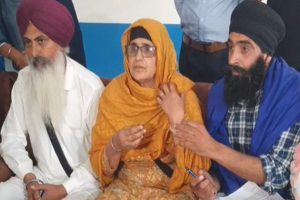The National Disaster Management Authority (NDMA) is gearing up to launch Cell Broadcasts by the end of this year, as the second phase of its Common Alerting Protocol System (CAPS), senior officials said here on Sunday.
Simply put, Cell Broadcast is a system of delivering messages or alerts on the mobile phones of people in a defined locality – geo-targeted and geo-fenced. The mobile phones in the targeted area will sound out alerts automatically even if it is on a silent mode.
The Cell Broadcast is also not affected by telecom traffic load.
The NDMA plans to issue all ‘red alerts’ as Cell Broadcast.
“When the mobile phones in India get compatible to get signals from the NavIC system (Indian GPS), then the alerts can be sent directly without depending on the telecom players,” an official said.
One of the issues with the SMS alerts is that the telecom network gets slowed down with traffic load.
“Soon India’s disaster management alerts will be comparable with the best in the world,” a senior official said.
The first phase of the Rs.354 crore CAPS was the sending disaster precautionary alerts as SMS (short messaging service) to the cell phone users in a defined area. “During the cyclone in Gujarat, around 32 million SMS alerts were issued which made people cautious. The SMS messages could be said as one of the reasons for not losing single life due to the cyclone,” NDMA Member, Lt Gen Syed Ata Hasnain (retd) told reporters here.
He said SMS alerts were also sent to mobile users in Tamil Nadu during the Covid-19 period.
The NDMA officials were here to participate in the G20 third and final Disaster Risk Reduction Working Group meeting to be held July 24-26.
This marks the first time that a dedicated working group on Disaster Risk Reduction (DRR) has been constituted, signifying India’s commitment to addressing global challenges posed by disasters and climate emergencies.
This meeting will bring together G20 Countries and their leadership, international organisations and knowledge partners to engage in drafting the Communique encapsulating shared commitments and key recommendations regarding the working group’s priority areas.
These areas include the Global Coverage of Early Warning Systems, Disaster and Climate Resilient Infrastructure, Financing Framework for Disaster Risk Reduction, Disaster Response System, and the Ecosystem-based Approach to DRR.
The event will see the participation of Dr. P.K Mishra, Principal Secretary to Prime Minister, Mami Mizutori, Special Representative of the UN Secretary-General, Dr. Raditya Jati, Deputy for Systems and Strategy, National Disaster Mitigation Agency, Indonesia, Pedro Piacesi de Souza, Second Secretary, Embassy of Brazil, New Delhi and Amitabh Kant, G20 Sherpa Ambassador.
According to Kamal Kishore, Member Secretary, the first two meetings were held in Gandhinagar and Mumbai.
Kishore said at the Gandhinagar meeting, five priority areas were identified viz., include the Global Coverage of Early Warning Systems, Disaster and Climate Resilient Infrastructure, Financing Framework for Disaster Risk Reduction, Disaster Response System, and the Ecosystem-based Approach to DRR.
The Communique, endorsed by all, will serve as a seminal guiding document for G20 nations, underscoring the critical significance of disaster risk reduction. It will outline concrete actions to be undertaken at national and international levels, emphasising the urgency of integration of DRR into financing decision making and mainstreaming DRR into the development cooperation of G20 countries to reduce risk posed by disasters.
In addition to the technical sessions, side events organised by the knowledge partners such as National Institute of Disaster Management (NIDM), the Coalition for Disaster Resilience Infrastructure (CDRI), and UN Women. The side events will focus on capturing the Resilience Dividend Towards Closing the Infrastructure Gap, enhancing disaster-resilient infrastructure governance and women-led and community-based DRR.











